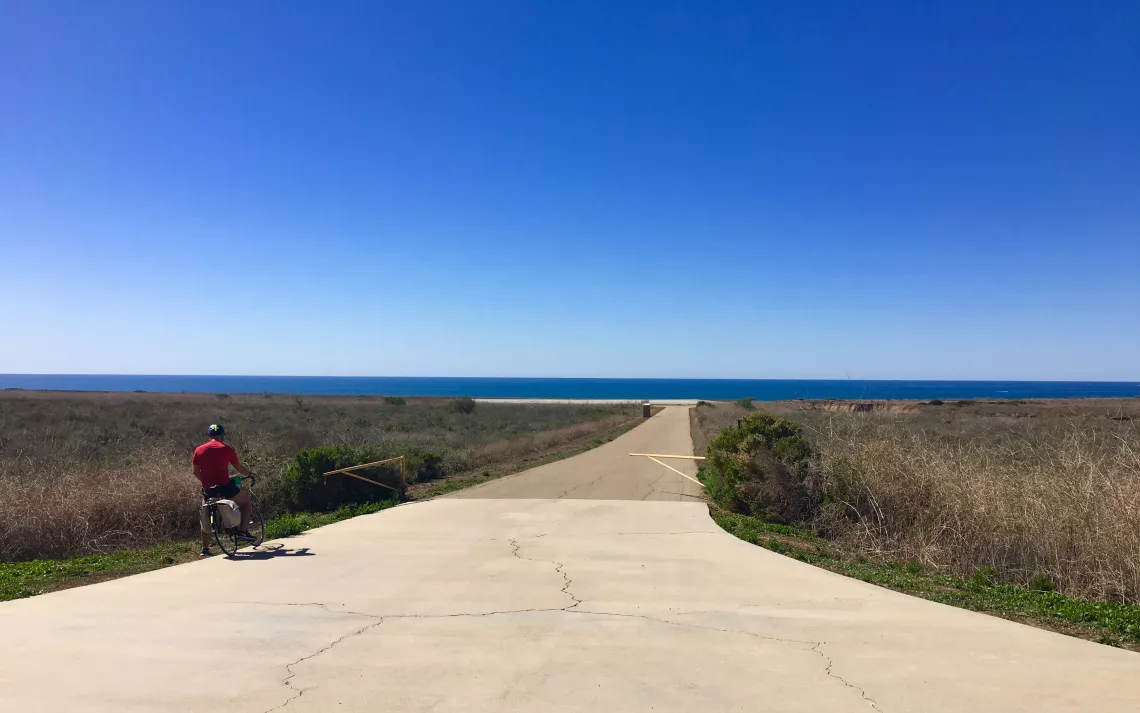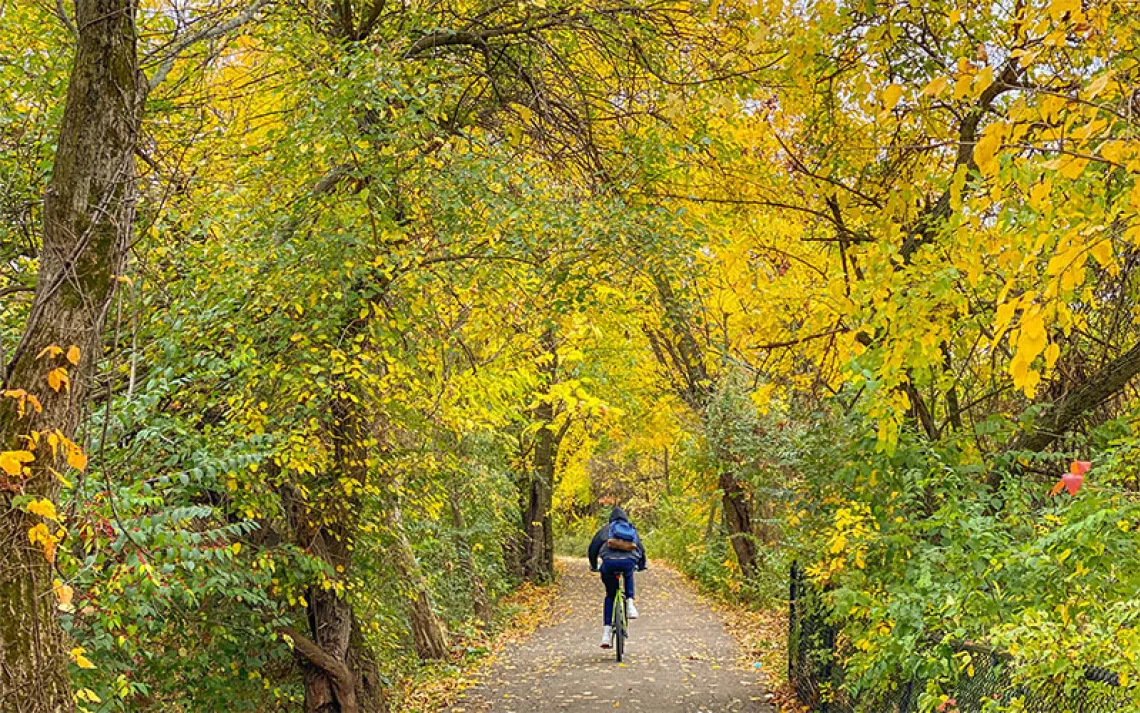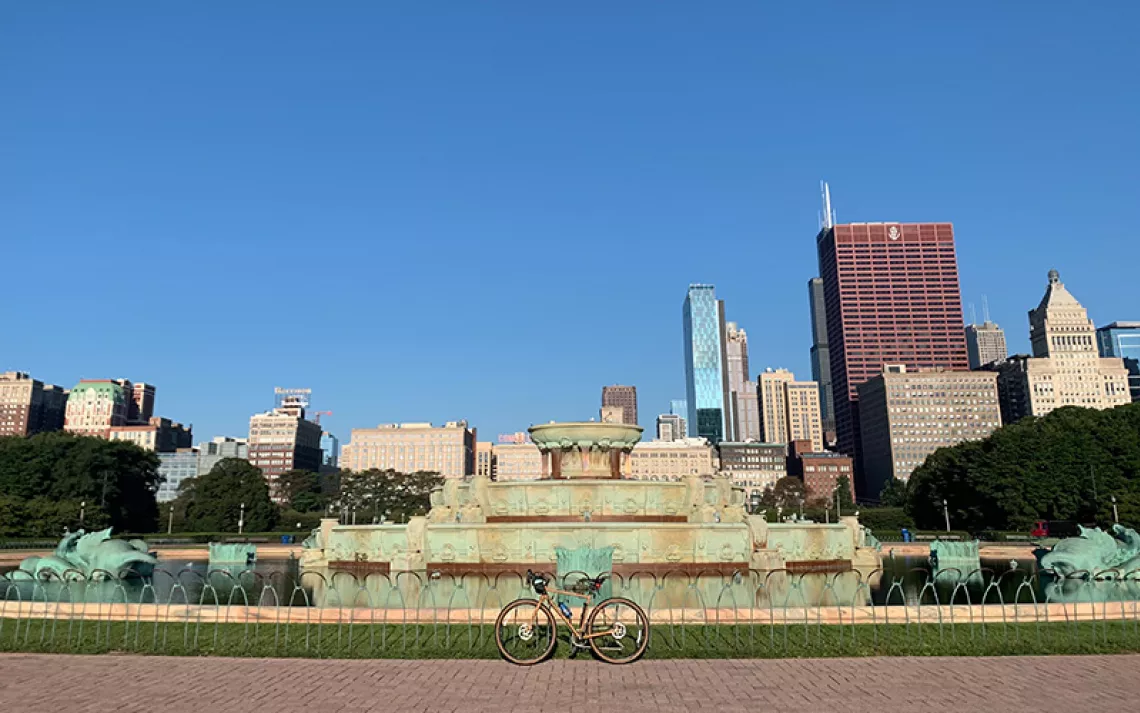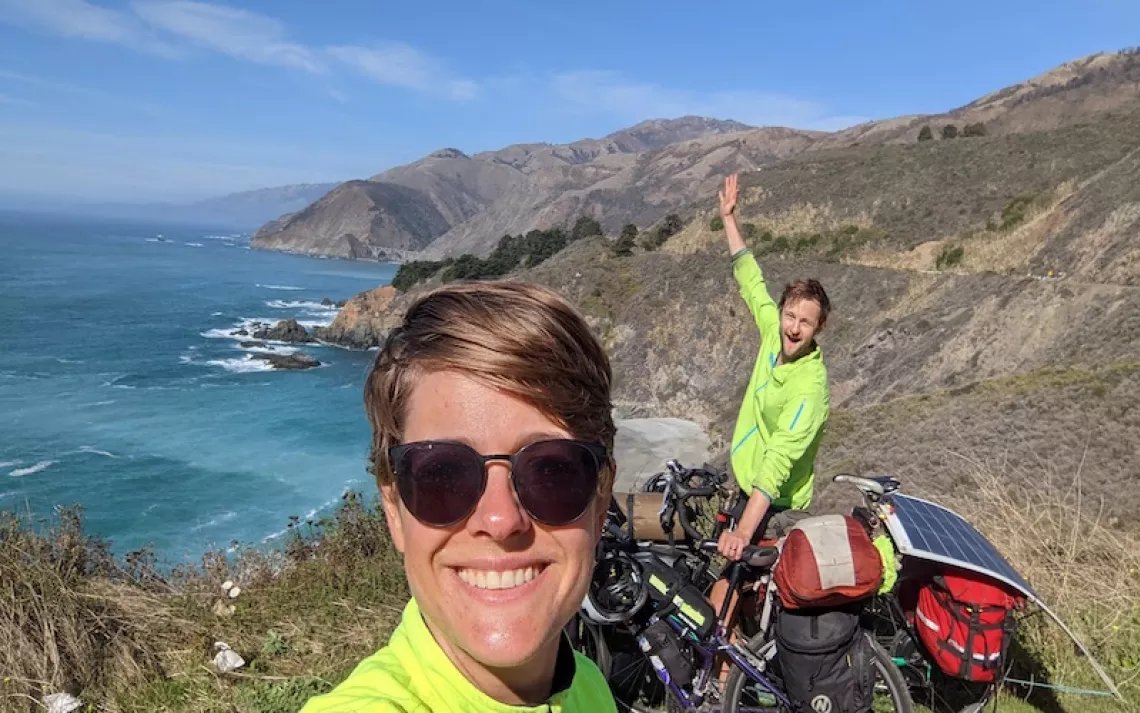Bike-Packing SoCal’s Coast
Braving the road on this scenic but congested section of California has its rewards

Photo by Richard Lamanna
It doesn’t take long before I witness the savage nature of San Diego County’s ecosystem.
Ten feet in front of me, a rabbit’s carcass has been splayed open and picked apart, innards everywhere, like scrambled eggs at a brunch buffet. Nearby two massive birds with saggy throats and wrinkled foreheads stand guard on a barbed-wire fence. A showdown ensues: sheriffs of a lawless town versus, me, an unwelcome visitor.
Then it clicks. I’m staring at two (hungry) California condors, the largest land birds to fly above North America. These powerful and intelligent birds came close to extinction after decades of poaching, lead poisoning, and habitat destruction, but thanks to conservation efforts in the 1980s, led in part by the Los Angeles and San Diego Zoos, populations rebounded and have since made a slow and steady recovery–much to the dismay of their prey, like the one I’ve just spotted on the side of the road.
Thankfully I’m too big to be their next target, and considering I’m about to embark on an arduous 90-mile bike-packing journey from San Diego to Long Beach, that’s a huge relief. Eyeing their razor-sharp talons, which could easily pierce the shell of my plastic helmet, I steer back onto my route near Oceanside, letting them devour their breakfast in peace.
An experienced bike-packer, I am not. So when my husband, Richard, first presented an itinerary that included two consecutive days of cycling 45 miles, I balked at his enthusiastic, we-can-do-it attitude. He pitched that we’d see some of the most pristine of the Golden State's 840 miles of coastline, where jagged, dramatic bluffs spill into sandy beaches. And, he added, because we’d pass through many towns along the way, our packs would be light, our stomachs full.
Still, I didn’t budge. Navigating SoCal’s traffic-choked freeways and skinny corridors, like I-5 and the PCH, is dangerous enough in my trusty Prius, let alone on a two-wheeled piece of titanium that could be flicked into a ditch by a swerve-happy driver. Plus, there still aren’t major bike lanes through places like Laguna Beach, even though bicycle activists have been raising the issue to their city councils for years.
But Richard was able to convince our friend Amelia to join, and if there were three of us, we’d have the whole safety-in-numbers thing and take up more space on the road. I liked the idea that our little biking gang could send a message to even one distracted driver about the importance of slowing down for others (and for wildlife!). I sent a high-five emoji to our group text, sealing my commitment to this adventure, and headed to the local bike shop to get my rusty Cannondale tuned up.
After my early-morning man vs. wildlife encounter, the first 15 miles of our inaugural cycling expedition pass without much fanfare. We mapped a course ahead of time that takes us through Camp Pendleton, where we are instructed by an authoritative U.S. Marine to ride in a single-file line at all times, and then onto San Onofre State Beach and the nuclear power plant, where we spot stoked surfers zipping up their wet suits before disappearing down a trail to the ocean.
The ever-changing topography becomes an awe-inspiring distraction to the heaviness in my legs. On our left, the swirling waters of the Pacific sparkle like a beaded indigo gown. To our right, a sea of frustrated motorists inch along I-5, as the Saturday-morning rush hour has already commenced. As a Southern Californian, I’ve been in their position. There is no greater frustration than watching bicyclists travel faster than you, especially on a multilane highway. I’ll be one of them again soon enough, I think, but for now it feels oh-so-good to be cruising on two wheels.
At some point, my pace slows and I fall behind my gang. When I pass Capistrano Beach Park, it triggers a trove of memories. In elementary school, I built a mock version of the mission of San Juan Capistrano, which I constructed with my mother’s help and homemade Play-Doh. The flimsy structure didn’t last long, but what remained with me was the legend of the church’s infamous cliff swallows. Every spring hundreds of these birds travel over 6,000 miles from Argentina to return to their existing nests. Since the 1930s, locals have celebrated this journey with a parade and festival.
Later that night, after a soak in the hot tub at our hotel in Dana Point, I google the history of the mission and its birds. I’m sad to learn that because of urbanization, many swallows have stopped returning to their home. In 2011, a cliff swallow specialist was brought in to help restore the populations by using recorded courtship calls to lure migrating birds. That phase of the project was successful, and the number of nesting birds did increase. Still, their populations have not been fully restored.
Maybe they changed their migration pattern, I hope, and found a safer place to nest, like a nearby bridge. But then again, if I shudder at the rush of a speeding vehicle along PCH, like I did countless times that day, how does an eight-inch swallow endure the ongoing stress of a rumbling bulldozer leveling ground for an apartment complex?
Day two arrives without any of the initial excitement that buoyed our spirits the day before. The views are still inspiring, but it’s another 45 miles until we reach our destination, and our bodies already feel broken. I mount my bike at the last possible second, then hoist my sore limbs over my seat and pray the Tylenol kicks in soon.
Before the errand-running, church-going, soccer-practicing motorists clog the Sunday roads, we travel along the riskiest sections of our route and commune with other cyclists at red lights. We tell them we’ve made the journey from San Diego, and they are impressed. We are, too. For this two-hour window, our ride through the slopes and inclines of Dana Point, Laguna Beach, and Newport is easy, almost smooth. Like a trio of pelicans, we drift along on an offshore breeze.
But as the ground temperature rises, so does the frenetic pace of Orange Country, and soon we’re dodging aggressive drivers, who are all eager to get somewhere and to get there fast.
When we finally cross the Los Angeles County line around noon, it feels like a victory, so I put my hands up, as if I won the Tour de France. After covering more than 95 miles in two days, I’m thrashed. My skin is wind-burned, my lips are chapped, and my groin is so sensitive that even the slightest graze of my bike seat sends pain signals rushing to my brain.
We meander down the bike lanes of Long Beach, and I begin to detox from the survival mode in which I’ve been living. I start to hear my own thoughts, which I realize are hard to process over the symphony of noises coming from cars, squeaky buses, Mack trucks, moving vans, Amtrak trains, and so many other things that make living in an urban area such a ruckus. Then at a stop sign, I hear myself say, “Let’s do this again soon.”
WHERE: Southern California coast from San Diego to Long Beach
GETTING THERE: The network of public trails and bikeways from San Diego to Long Beach (115 miles one way) follows major highways, like Interstate 5 and the PCH, and large sections of the route include cycling on or next to these heavily trafficked motorways. There are designated bike lanes through San Diego County, most of Orange County, and Long Beach with easy-to-follow signposts that help riders stay on course. To make this a one-way (car-free) journey, take the Amtrak Pacific Surfliner to San Diego’s Santé Fe Depot station (the last stop). Bikes are allowed on board but must be reserved in advance.
BEST TIME TO VISIT: Southern California weather lends itself to biking year-round, but early spring will almost guarantee cool daytime temperatures. Begin each day by 7 A.M. and get a jump-start on the most heavily trafficked sections of the route.
PERMITS: Camp Pendleton can be accessed by submitting a simple background check on its website. Apply seven days prior to arriving and avoid riding on Interstate 5.
SURVIVAL TIPS: Biking in a small group (three to four) maximizes the chance of being seen by distracted drivers and makes it easier to take up an entire lane and not get honked at–though there are no guarantees.
WILDLIFE: From January to April, gray whales migrate to Baja, Mexico, and can be seen making their trip south. Birders will be eager to spot California condors and nesting swallows that use this region as a migratory route.
 The Magazine of The Sierra Club
The Magazine of The Sierra Club



